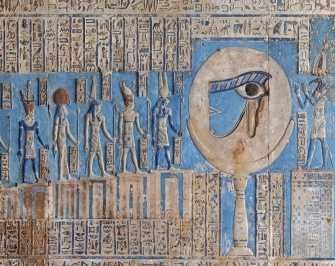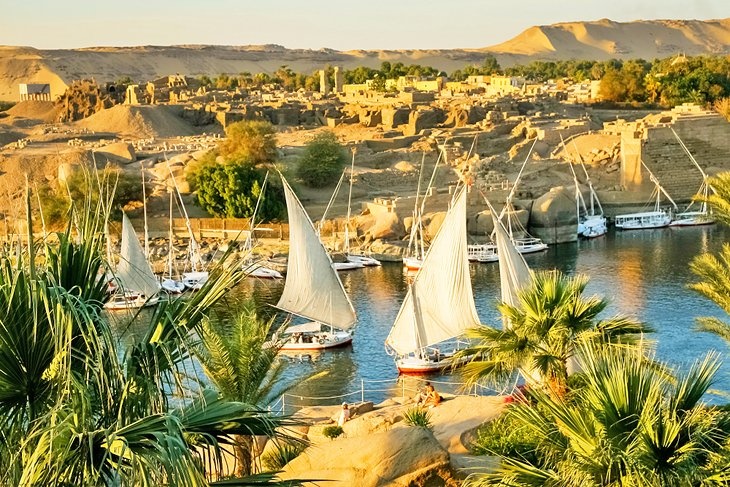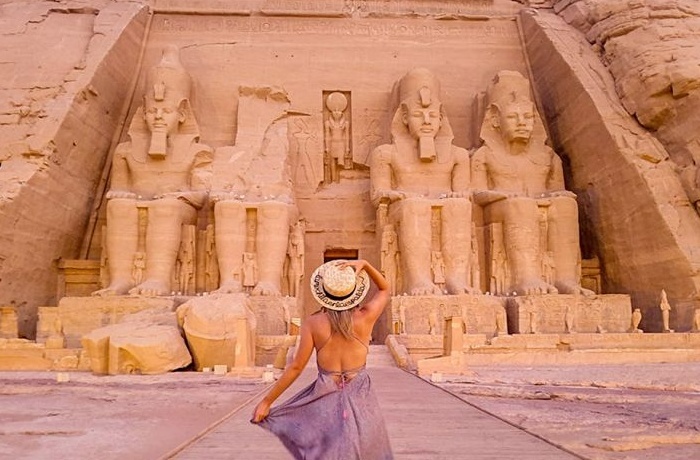- Home
-
Day tours
- Day tours
-
Marsa alam tours
-
Hurghada tours
-
El Quseir Tours
-
Makadi bay
-
Cairo Tours
- Cairo Tours
- Top Things in Cairo
- Siwa tours from Cairo
- Cairo Culture Tours
- Alexandria trips from Cairo
- Nile Cruises From Cairo
- Night Dinner Cruises in Cairo
- Sound and Light show Excursion
- Fayoum trips from Cairo
- Luxor Tours From Cairo
- white desert trips from Cairo
- Al Minya tours from Cairo
- Cairo Travel Packages
- Cairo Desert and Safari tours
- Aswan tours From Cairo
- Cairo Taxi Transfers
-
Luxor Tours
-
Portghalib tours
-
Sharm el Sheikh
-
El Gouna Tours
-
Aswan Tours
-
Sahl Hasheesh Tours
-
Soma Bay tours
- Safaga Tours
-
Airport Transfer
-
Tour Packages
- Tour Packages
-
Egypt Travel Packages
- Egypt Travel Packages
- Egypt Itinerary 4 Days
- Egypt Itinerary 5 Days
- Egypt Itinerary 6 Days
- Egypt itineraries 7 Days
- Egypt itineraries 8 Days
- Egypt Itinerary 9 Days
- Egypt Itineraries 10 Days
- Egypt Itinerary 11 Days
- Egypt Itineraries 12 Days
- Egypt Itineraries 13 Days
- Egypt Itineraries 14 Days
- Egypt Itineraries 15 Days
- Egypt Itineraries 16 Days
- Egypt Itineraries 17 Days
- Egypt Itineraries 18 Days
- Egypt Itineraries 19 Days
- Egypt Itineraries 20 Days
- Egypt Itineraries 21 Days
- Top Egypt Vacation Packages
- Egypt Cruises Packages
- Egypt Christmas Holidays
- Hurghada Holiday Packages
- Marsa Alam holidays packages
- Marsa Alam tour Packages
- Egypt Walking Holidays
-
Shore Excursions
- Egypt Nile Cruises
-
Egypt Attractions
- Egypt Attractions
-
Top Attractions In Luxor
-
Top attractions in Bahariya
-
Top Attractions In Fayoum
-
Top Attractions In Siwa
-
Top attractions in Sakkara
-
Top Attractions In Giza
-
Top Attractions In Aswan
-
Top Attractions In Alexandria
-
Top Attractions In Cairo
-
Attractions in Damietta
-
Top Attractions In Hurghada
-
Top Attractions in El Quseir
- Top attractions in Marsa Alam
- Top attractions in Al Minya
- Top attractions in El Gouna
- Top attractions in Sharm
- Contact us
-
Egypt Travel Guide
- Egypt Travel Guide
- Egypt tours Faq
- Egypt Itinerary 7 Days
- Best Tours in Marsa Alam
- Egypt Itinerary 8 Days
- Travel to siwa from Cairo
- Plan your trip to Egypt
- Is Egypt Safe to Visit
- Egypt Itinerary Planner
- The Best Winter Destinations
- Egypt Tour Packages guide
- The best Nile Cruises in Egypt
- Tips For visiting the Pyramid
- Foods You Need to Eat In Egypt
- The 10 Best Marsa Alam Tours
- Payment Policy
- Covid-19
4 Days tour Luxor and Aswan with Abu simble from Safaga port
Thank you for your inquiry
We received inquiry and someone will shortly be in contact with you.
You will get a notification to your email address.
If you have any questions feel free to contact us anytime.
From USD 700
+6 Additional options
From USD 700
+6 Additional options
Book Now Inquire BookingThank you for your inquiry
We received inquiry and someone will shortly be in contact with you.
You will get a notification to your email address.
If you have any questions feel free to contact us anytime.
Share this activity
► Day 1 Marsa Alam-Luxor:
At 04:00 Am We will pick you up from Marsa Alam by private air-conditioned taxi
At 08:00 Am
The Temple of Hathor was largely constructed during the Late Ptolemaic period, specifically during the reign of Ptolemy XII and Cleopatra VII. Later additions were made during the Roman period. Although built by a dynasty of rulers who were not native Egyptians themselves, the design of this temple has been found to be in accordance to that of other classical Egyptian temples, with the exception of the front of the hypostyle hall, which, according to an inscription above the entrance, was constructed by Emperor Tiberius.
Apart from these, there are also scenes in the temple complex portraying the Ptolemaic rulers. For example, carved onto the external face of one of the temple walls is a huge relief of Cleopatra VII and her son by Julius Caesar and co-ruler, Ptolemy XV (better known as Caesarion). The two Ptolemaic rulers are shown dressed in Egyptian garb, and offering sacrifices.
Hathor was also regarded as a goddess of healing, and this is evident in the presence of a sanatorium in the temple complex. Here, pilgrims would come to be cured by the goddess. Sacred water (which was made holy by having it poured onto statues inscribed with sacred texts) was used for bathing, unguents were dispensed by the priests of Hathor, and sleeping quarters were provided for those hoping that the goddess would appear in their dreams, and so aid them.
at 09:30 drive to Luxor, Proceed to Visit Karnak temples.
► Karnak temple:
The Temple of Karnak is the largest ancient religious site known anywhere in the world, No site in Egypt is more impressive than Karnak. It is the largest temple complex ever built by man. It represents the combined achievement of many generations of ancient builders and Pharaohs. The Temple of Karnak is actually three main temples situated on 247 acres of land.
13:00 Lunch in Local restaurant in the west bank
at 14:00- The valley of the Kings:
The Valley of the Kings The final resting place of Egypt’s rulers from the 18th to the 20th dynasty, it is home to tombs including the great Pharaoh Ramses II and boy Pharaoh Tutankhamen. The tombs were well stocked with all the material goods a ruler might need in the next world. Most of the decoration inside the tombs still well preserved. If you wish to visit the Tomb of The young Pharaoh Tutankhamon. It costs 200 Egyptians Pounds Extra
► 16:00 the Colossi Of Memnon:
Colossi of Memnon are two massive stone statues of king Amenhotep III are the only remains of a complete mortuary temple. The statues are made from blocks of quartzite sandstone which exist in Cairo then moved 700 KM to Luxor, The two statues Know as the Colossi of Memnon, Rising about 18 M from the plain, They are the remains of what once the largest complex on the west bank, Built by Amenhotep the Third. At around noon you will have lunch in a local restaurant in Luxor, Then Visit The Temple of Karnak -the largest ancient religious site known anywhere in the world :
Overnight in Luxor in Steigenberger Hotel Luxor

► Day 2- Luxor -Aswan
After Breakfast drive to Aswan
Visits of Aswan including the Temple of Philae and tour by Felucca around Elephantine, the High Dam, the Unfinished Obelisk
► Phiala temple
Built to honor the goddess Isis, this was the last temple built in the classical Egyptian style. Construction began around 690 BC, and it was one of the last outposts where the goddess was worshipped.
► The High Dam
Aswan High Dam is a rock-fill dam located at the northern border between Egypt and Sudan. The dam is fed by the River Nile and the reservoir forms Lake Nasser. Construction for the project began in 1960 and was completed in 1968. It was officially inaugurated in 1971.
► The Unfinished Obelisk
Aswan was the source of ancient Egypt’s finest granite, used to make statues and embellish temples, pyramids, and obelisks. The large unfinished obelisk in the Northern Quarries has provided valuable insight into how these monuments were created, although the full construction process is still not entirely clear. Three sides of the shaft, nearly 42m long, were completed except for the inscriptions. At 1168 tonnes, the completed obelisk would have been the single heaviest piece of stone the Egyptians ever fashioned.
12:00 lunch during the trip
Overnight in Basma Hotel.

► Day 3: Aswan
►Aswan Botanical Gardens
Enjoy your Aswan Botanical Gardens tour. Our local tour guide will pick you up from your hotel or Nile cruise in Aswan to go to Aswan Botanical Gardens
Kitchener’s Island, to the west of Elephantine Island, was given to Lord Horatio Kitchener in the 1890s when he was commander of the Egyptian army. Indulging his love for beautiful palms and plants, Kitchener turned the entire island into the stunning Aswan Botanical Gardens, importing plants from the Far East, India and parts of Africa.
Aswan Botanical Gardens
one of the most important attractions in the middle of Aswan City, it was built on an area of 16.8 Acres then divided into sectors of rare plants and trees, such as sandalwood, chilli, jackfruit, hibiscus, and so many differnt plants and trees. This garden overlooks on the western mountain that is rich in Pharaonic treasures, which begins with the tombs of the nobles in the north and ends with the Agha Khan Mausoleum in the south, besides that the greatness of this place dates back to the 19th century.
►Darawa camel markets
Darawa is the largest camel markets in Egypt. Most of the camels come in caravans from Sudan’s and Darfur along the Darb Al Arba’een to north of Abu Simbel before being trucked to Daraw. you will see more than 2000 camels in this market.
Camels are sold there every day of the week, but the main days are Tuesday, Saturday and Sunday. they spend two days in quarantine before being sold by their Sudanese owners. Most go on to the camel market in Birqash, about 35km northwest of Cairo, where they are either sold to Egyptian farmers, exported to neighbouring countries or slaughtered for meat.
►Trip to Nubian Village by Boat
Enjoy your Nubian Village Tour Aswan. Our local tour guide will pick you up from your hotel or Nile cruise in Aswan to sail on the Nile by a motorboat to the Nubian Village which is located on the West Bank of the River Nile in Aswan and just opposite Soheil Island and near the Aswan Dam passing by the First Cataract of Aswan, this fantastic tour to the Nubian Village lets you meet and impact with a Nubian family and to learn about their simple lifestyle, culture, and traditions
► Day 4: Abu Simbel- Marsa Alam
Breakfast box with Early departure
Visit Abu Simbel
► Abu Simbel temples
The two temples of Ramses the second and the Queen Nefertari were carved out of the Mountain on the west bank of the Nile between 1274 and 1244 B.c, The Great Temple was dedicated to Ramses the second, Ra-Harakhty, Amun Ra and Ptah, with 4 Colossal statues, The second temple was dedicated to The Queen Nefertari and Goddess Hathor, the two temples were dismantled stone by stone and rebuilt on higher ground, The preservation of the two temples of Abu Simbel must Rank as the greatest Achievement of the Unesco
13:00; Lunch in Aswan

Highlights
- ►Dendera temple
- ► The valley of the Kings
- ► Queen Hatshepsut temple
- ► Tomb of The young Pharaoh Tutankhamon
- ► The Colossi of Memnon.
- ► Karnak temple
- ► Phiala temple
- ► Abu Simbel temples
- ►Aswan Botanical Gardens
- ►Darawa Camel Markets
- ►Trip to Nubian Village by Boat
► Inclusions:
- ► Private air-conditioned car
- ► Entrance fees
- ► Private tour guide
- ► Lunch in Luxor and in Aswan
- ► One Night in Steigenberger Luxor
- ►Two Nights stay at Basma Aswan based on Bed and Breakfast
- ► Motorboat Trip in Aswan to Phila temple
- ► Lunch at a quality restaurant
- ► The assistance of our personal during tours
- ► No Hidden Costs
► Exclusions:
- ► Any Extras not mentioned in the itinerary
- ► Tipping
- ► SailTrip
- ► Dinner in Aswan
► Please remember to bring:
- ► Passports
- ► Camera
- ► Hat
- ►Sunglasses
► Tour Type :
-
► Private
► Pick up Time :
-
► 4:00 am
Know Before You go
-
► Ask for your breakfast box before the early departure. The hotel arranges it for you for free.
► Booking Method:
- ► Full Payment during the trip or by Visa Card Online Via our website






